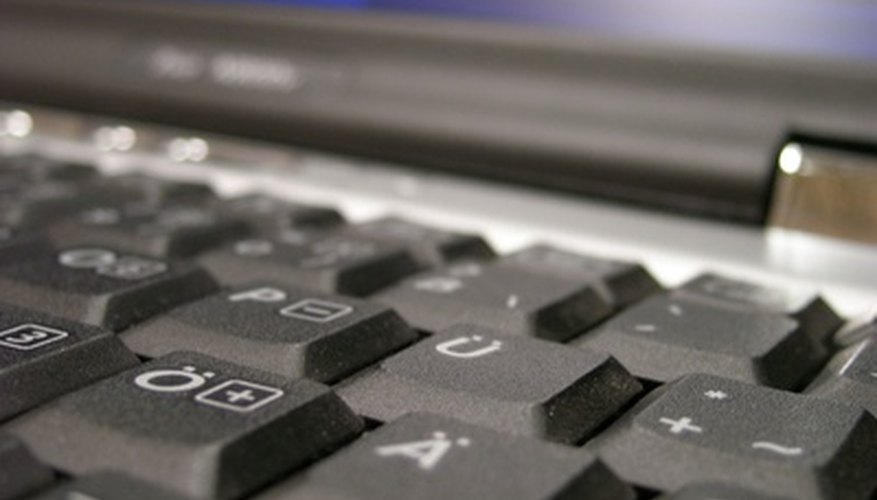Along with GIF, PNG and BMP, JPEG is one of the most common digital image formats. Primarily used for the display of pictures and other complex graphics, JPEG files can range dramatically in size, depending both on the quality of the image and its dimensions. If you need to resize a JPEG to two megabytes or less to comply with upload or disk space limits, adjust the image using Adobe Photoshop, Corel PaintShop Photo Pro or the free Microsoft Paint program included with the Windows operating system.
Click "File" in the top menu bar and select "Open." Locate your JPEG file in the resulting window and open it by double-clicking its icon.
Click "Image" in the top menu bar and select "Image Size." In the resulting window, check the "Scale Styles," "Constrain Proportions" and "Resample Image" boxes. Also click the drop-down menu near the bottom of the window and select the "Bicubic" option.
- Along with GIF, PNG and BMP, JPEG is one of the most common digital image formats.
- Click "Image" in the top menu bar and select "Image Size."
Enter a value of "300" in the "Resolution" field if you intend to print the image, or a value of "72" if you will only use it on a computer screen. In addition, enter smaller values in the "Width" and "Height" fields to reduce the size of your image.
Look to the "Pixel Dimensions" label near the top of the window. If the adjacent value is "2M" or less, you have successfully reduced your image size and may click "OK" to confirm your changes. If the value remains greater than two megabytes, return to the previous step and reduce the width and height values until the image reaches your preferred size.
Click "File" in the top menu bar and select "Save" to confirm your changes.
- Enter a value of "300" in the "Resolution" field if you intend to print the image, or a value of "72" if you will only use it on a computer screen.
- Click "File" in the top menu bar and select "Save" to confirm your changes.
- Enter a value of "300" in the "Resolution" field if you intend to print the image, or a value of "72" if you will only use it on a computer screen.
- Click "File" in the top menu bar and select "Save" to confirm your changes.
Click "File" in the top menu bar and select "Open." Locate your JPEG file in the resulting window and open it by double-clicking its icon.
Click "Image" in the top menu bar and select "Resize." In the resulting window, check the "Lock aspect ratio," "Resize all layers" and "Resample using" boxes. Also click the drop-down menu adjacent to the "Resample using" box and select the "Smart Size" option.
- Click "Image" in the top menu bar and select "Resize."
Enter a value of "300" in the "Resolution" field if you intend to print the image, or a value of "72" if you will only use it on a computer screen. In addition, enter smaller values in the "Width" and "Height" fields located below the "Pixel Dimensions" heading to reduce the size of your image. Click "OK" after making your changes.
Click "File" in the top menu bar and select "Save."
Open the folder containing your JPEG file. Right-click the file's icon, select "Properties" and then look to the "Size on disk" label. If the adjacent value is "2.00 MB" or less, you have successfully reduced your image size and may click "OK" to confirm your changes. If the value remains greater than two megabytes, return to Step 2 and further reduce the width and height values until the image reaches your preferred size.
- Check the box labelled "Maintain aspect ratio" in the resulting window.
- If the adjacent value is "2.00 MB" or less, you have successfully reduced your image size and may click "OK" to confirm your changes.
- Open the folder containing your JPEG file.
- Right-click the file's icon, select "Properties" and then look to the "Size on disk" label.
- Check the box labelled "Maintain aspect ratio" in the resulting window.
- If the adjacent value is "2.00 MB" or less, you have successfully reduced your image size and may click "OK" to confirm your changes.
Click the blue button in the top left corner of the window and select "Open." Locate your JPEG file in the resulting window and open it by double-clicking its icon.
Select the "Home" tab on the toolbar near the top of the window and then click the "Resize" button.
Check the box labelled "Maintain aspect ratio" in the resulting window. In addition, select the "Pixels" option and then enter smaller values in the "Horizontal" and "Vertical" fields to reduce the size of your image. Click "OK" after making your changes.
Click the blue button in the top left corner of the window and select "Save."
Open the folder containing your JPEG file. Right-click the file's icon, select "Properties" and then look to the "Size on disk" label. If the adjacent value is "2.00 MB" or less, you have successfully reduced your image size and may click "OK" to confirm your changes. If the value remains greater than two megabytes, return to Step 2 and further reduce the width and height values until the image reaches your preferred size.
- Check the box labelled "Maintain aspect ratio" in the resulting window.
- If the adjacent value is "2.00 MB" or less, you have successfully reduced your image size and may click "OK" to confirm your changes.
- Open the folder containing your JPEG file.
- Right-click the file's icon, select "Properties" and then look to the "Size on disk" label.
- Check the box labelled "Maintain aspect ratio" in the resulting window.
- If the adjacent value is "2.00 MB" or less, you have successfully reduced your image size and may click "OK" to confirm your changes.
